The Benefits of Multi-Age Learning Environments
In a multi-age learning environment, you have the opportunity to not only learn from your peers but also teach others, fostering a reciprocal exchange of knowledge. The benefits extend beyond academics, influencing various aspects of personal growth and social development.
Imagine the impact of diverse perspectives, individualized support, and flexible group dynamics on your overall learning experience. These environments are designed to cultivate a unique atmosphere that nurtures holistic development and encourages lifelong skills that go beyond traditional classroom settings.
Key Takeaways
- Improved social skills and teamwork through diverse age interactions.
- Personalized learning fosters engagement, motivation, and academic success.
- Heightened empathy, understanding, and inclusivity in the learning environment.
- Enhanced critical thinking, collaboration, and respect for diverse perspectives.
Enhanced Social Skills Development
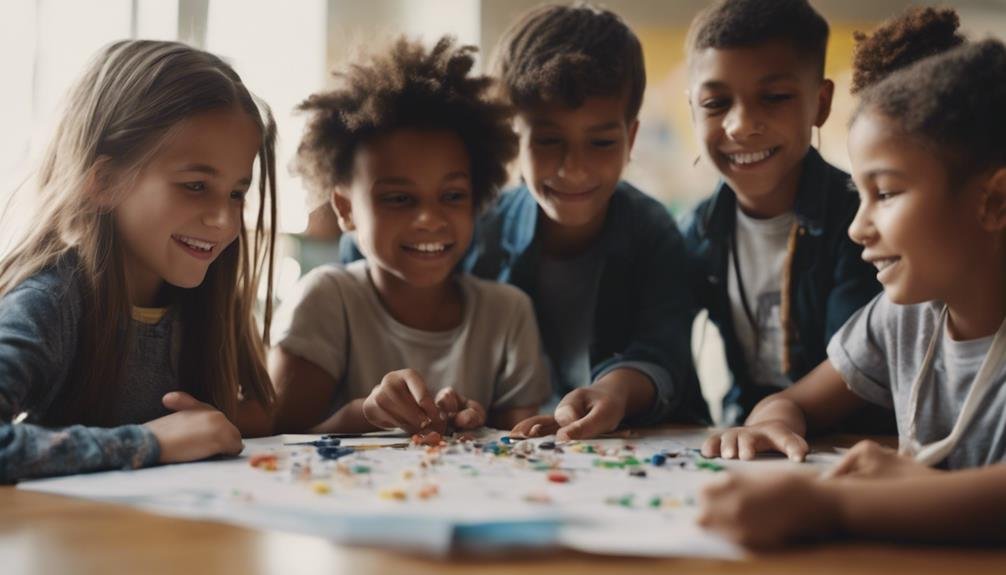
In multi-age learning environments, students often demonstrate improved social skills through interactions with peers of varying ages and experiences. This setting fosters enhanced communication abilities as students learn to adapt their communication styles to effectively convey their thoughts and ideas to individuals of different age groups. Research conducted by Veenman and Spaans (2005) supports this notion, indicating that students in multi-age classrooms exhibit more advanced communication skills compared to their peers in single-age classrooms.
Additionally, the collaborative nature of multi-age learning environments cultivates strong teamwork skills among students. By working together on projects and assignments with classmates of different ages, students learn the importance of cooperation, active listening, and respecting diverse perspectives. A study by Bell and Dedrick (2008) found that students in multi-age settings demonstrated higher levels of teamwork skills than those in traditional single-grade classrooms.
Tailored Learning Opportunities
Students in multi-age learning environments benefit from tailored learning opportunities that cater to their individual needs and learning styles based on their interactions with peers of varying ages and experiences. This personalized approach to education fosters a conducive environment for personalized growth, where students can progress at their own pace and focus on areas where they need improvement. Research has shown that when students receive tailored learning opportunities, they're more engaged, motivated, and likely to achieve academic success.
Collaborative learning plays a pivotal role in providing these tailored opportunities. By working with peers of different ages, students can benefit from diverse perspectives and knowledge. Older students can serve as mentors, providing guidance and support, while younger students can offer fresh insights and creativity. This collaborative dynamic not only enhances the learning experience but also promotes empathy and understanding among students of different ages. As a result, students in multi-age learning environments are better equipped to navigate the complexities of the modern world.
Increased Empathy and Understanding
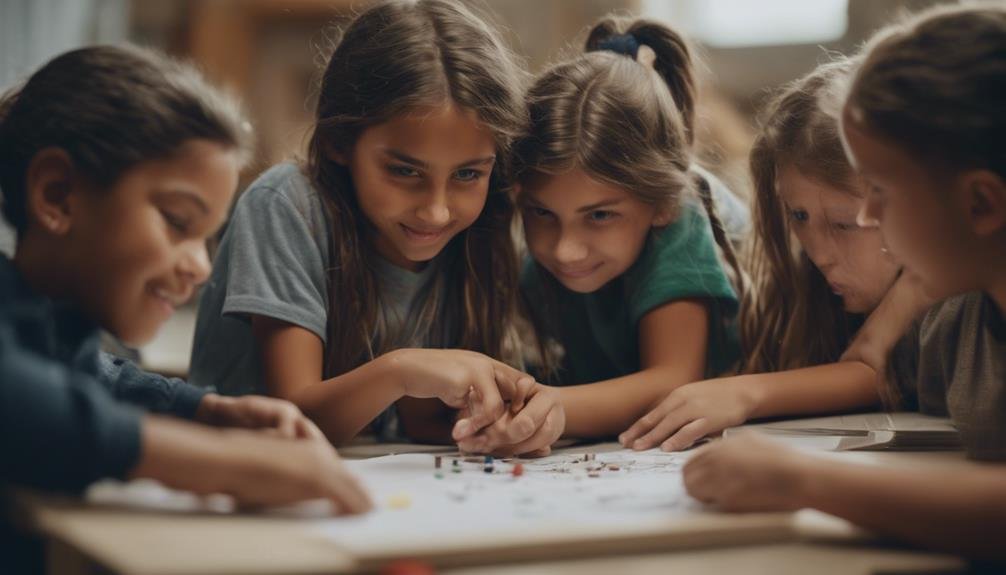
Through their interactions in multi-age learning environments, individuals develop a heightened sense of empathy and understanding towards their peers of varying ages and backgrounds. This increased empathy building and perspective sharing is a result of the diverse interactions that take place in such environments. Here's why this is essential:
- Empathy Building: Interacting with peers of different ages allows individuals to step into each other's shoes, fostering a deeper understanding of others' feelings and perspectives.
- Perspective Sharing: In multi-age settings, individuals have the opportunity to share their unique viewpoints and life experiences, leading to a more profound appreciation of diversity and varied outlooks.
- Understanding Differences, Fostering Connections: By being exposed to a range of backgrounds and ages, individuals learn to embrace differences and build connections based on respect and understanding.
These aspects not only enhance personal growth but also contribute to a more inclusive and harmonious learning environment where mutual understanding and support thrive.
Diverse Perspectives and Collaboration
Interacting with individuals of various ages in multi-age learning environments fosters a rich exchange of diverse perspectives and promotes collaborative learning experiences. When engaging with peers of different age groups, you are exposed to a wide range of viewpoints and life experiences, enriching your understanding of various subjects. This diversity in perspectives enhances critical thinking skills and encourages empathy and respect for differing opinions.
In collaborative projects, the combination of diverse viewpoints leads to more innovative solutions and a broader understanding of the topic at hand. Working with individuals from different age groups allows you to learn from their unique experiences and expertise, contributing to a more inclusive learning process. The table below illustrates the benefits of diverse perspectives and collaboration in multi-age learning environments:
| Benefits of Diverse Perspectives and Collaboration |
|---|
| Enhanced critical thinking skills |
| Innovative solutions |
| Broadened understanding of topics |
| Learning from unique experiences and expertise |
Individualized Instruction and Support
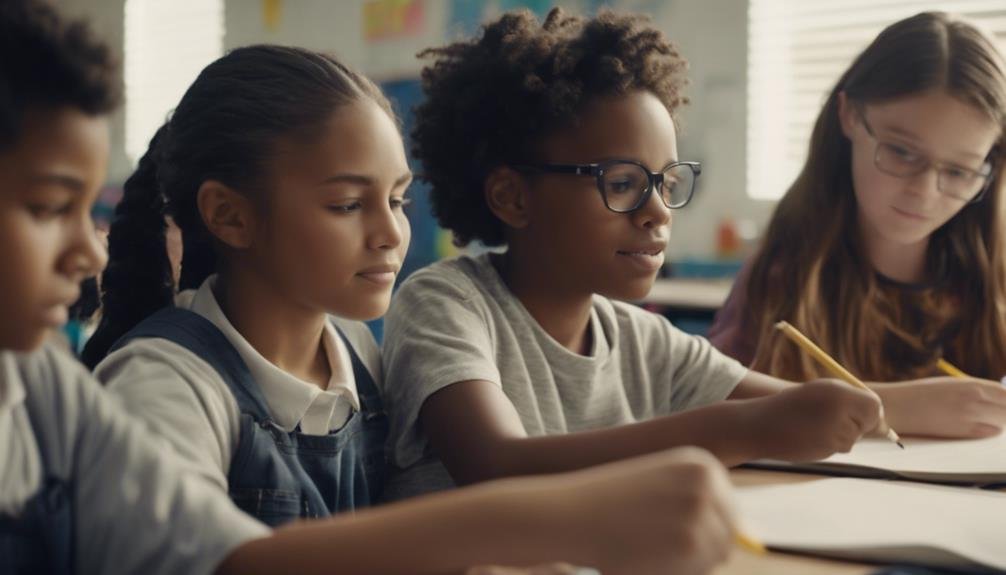
Incorporating personalized guidance and tailored support within multi-age learning environments enhances individual learning outcomes and promotes a more effective educational experience for all participants. Differentiated teaching strategies cater to the diverse academic needs of each learner, making certain that no one is left behind. Personalized guidance allows educators to address specific strengths and weaknesses, fostering a more supportive and inclusive learning environment.
- Customized Learning Plans: Tailoring lesson plans to individual abilities guarantees that each learner is appropriately challenged and supported.
- One-on-One Assistance: Providing personalized attention allows for targeted assistance, helping learners overcome obstacles and thrive academically.
- Flexible Instructional Approaches: Adapting teaching methods to suit different learning styles ensures that every participant can engage with the material effectively.
Strengthened Peer Mentorship
To further enhance the educational experience in multi-age learning environments, a focus on strengthened peer mentorship can substantially contribute to fostering a collaborative and supportive atmosphere among participants. Collaborative learning thrives when individuals of different ages come together to share knowledge and experiences. In this setting, older students often take on the role of mentors, providing guidance and support to younger peers. This cross-age support not only reinforces the mentor's understanding of the subject matter but also cultivates leadership skills and empathy.
Research indicates that peer mentorship can lead to increased academic achievement for both the mentor and the mentee. Through explaining concepts to others, mentors deepen their comprehension, while mentees benefit from personalized explanations and guidance tailored to their learning needs. Additionally, peer mentorship promotes a sense of belonging and community within the learning environment, reducing feelings of isolation and competition.
Flexible Group Dynamics
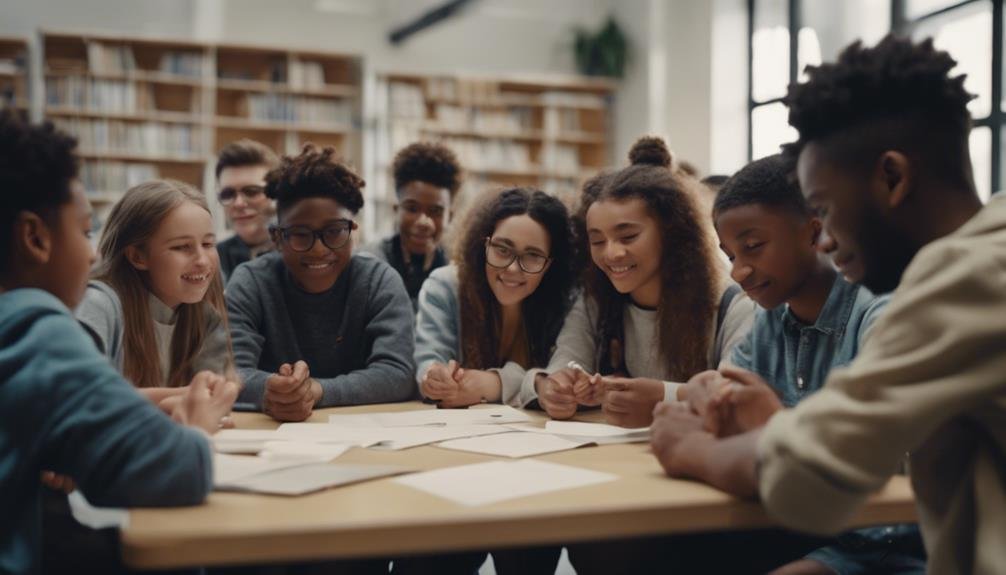
Flexible group dynamics in multi-age learning environments facilitate adaptive collaboration and personalized learning experiences for participants. In such settings, dynamic interactions among individuals of varying age groups lead to a rich tapestry of learning opportunities. Here's why flexible group dynamics are beneficial in multi-age learning environments:
- Enhanced Problem-Solving Skills: Age diversity within groups encourages individuals to approach challenges from different perspectives, fostering innovative solutions through collaborative efforts.
- Improved Communication Abilities: Interacting with individuals of different ages enhances communication skills as participants learn to adapt their communication styles to effectively convey ideas to a diverse audience.
- Increased Empathy and Understanding: Engaging in dynamic interactions with peers of various ages cultivates empathy and understanding, promoting a supportive and inclusive learning environment where participants learn from each other's unique experiences.
These benefits highlight how flexible group dynamics in multi-age learning environments not only promote academic growth but also contribute to the development of essential life skills through age-diverse interactions.
Encourages Lifelong Learning Habits
Encouraging lifelong learning habits in multi-age learning environments fosters a continuous pursuit of knowledge and skills beyond traditional education boundaries. By creating an environment that values curiosity and promotes independence, individuals are encouraged to seek out information and grow their understanding independently. This fosters a sense of ownership over one's learning journey, leading to a greater motivation to explore new topics and ideas even outside the classroom setting.
Research indicates that individuals who develop lifelong learning habits tend to have higher levels of job satisfaction and adaptability in a rapidly changing work environment. They're more likely to embrace challenges as opportunities for growth and development, demonstrating resilience in the face of new tasks or situations.
Additionally, fostering curiosity and promoting independence from a young age can have long-lasting effects on an individual's willingness to engage with new information and experiences throughout their lives. Multi-age learning environments play an essential role in instilling these habits early on, setting the stage for a lifetime of continuous learning and personal growth.
Promotes Cross-Age Relationships
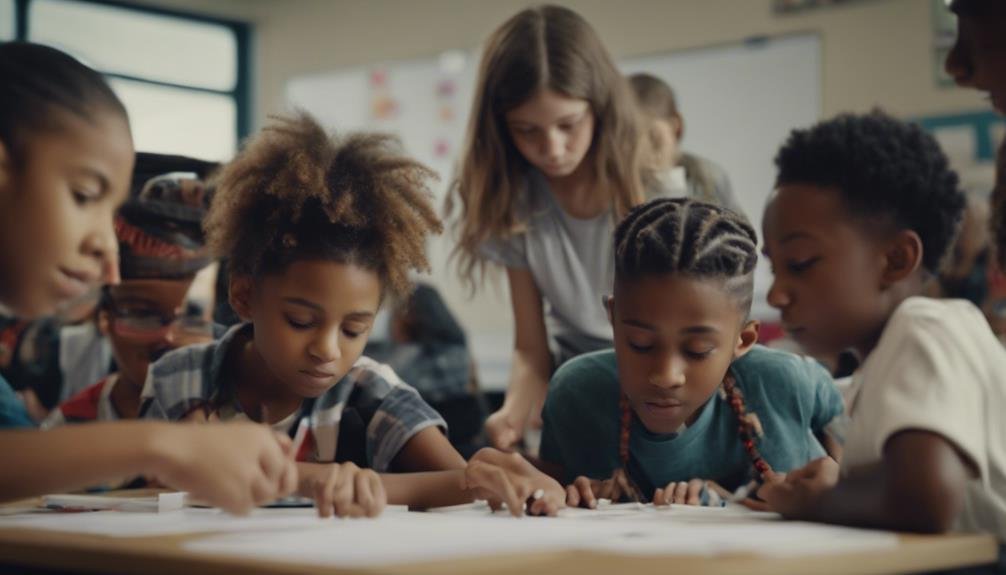
Promoting interactions across different age groups within multi-age learning environments enhances social connections and fosters a deeper understanding of diverse perspectives. In such settings, intergenerational connections flourish, leading to a myriad of benefits for individuals of all ages.
Here's why fostering cross-age relationships is vital in educational spaces:
- Enhanced Empathy: Interacting with individuals from various age groups cultivates empathy and understanding towards different life experiences and perspectives.
- Increased Social Skills: Engaging with a diverse range of individuals helps in developing important social skills such as communication, collaboration, and conflict resolution.
- Expanded Knowledge Base: Age diversity brings a wealth of knowledge and experiences, allowing for a rich exchange of ideas and insights that can broaden one's understanding of the world.
Facilitates Holistic Development
Facilitating holistic development in multi-age learning environments requires a thorough approach that integrates cognitive, social, emotional, and physical growth across diverse age groups. When different age groups interact in a learning setting, they're exposed to varying perspectives, fostering emotional intelligence and social skills. Older students often mentor younger ones, enhancing their emotional intelligence by teaching empathy, patience, and understanding. In return, younger learners benefit from observing and emulating these behaviors, hence promoting their emotional growth.
Additionally, cognitive growth is stimulated in multi-age learning environments through peer tutoring and collaborative problem-solving. Older students can reinforce their knowledge by explaining concepts to younger peers, solidifying their understanding. Simultaneously, younger students receive individualized support, which aids in their cognitive development. This symbiotic relationship nurtures a culture of shared learning and continuous improvement.
Frequently Asked Questions
How Do Multi-Age Learning Environments Impact Students' Academic Performance and Achievement Levels?
In multi-age learning environments, academic progress is positively influenced as students engage more actively. Peer collaboration fosters deeper understanding and boosts learning outcomes. Interacting with peers of different ages enhances skills and encourages holistic development.
What Strategies Can Teachers Use to Effectively Manage a Classroom With Students of Varying Ages and Abilities?
To effectively manage a classroom with varying ages and abilities, you must implement differentiated instruction to cater to individual needs. Utilize cooperative learning strategies to foster collaboration and peer support, creating an inclusive and supportive environment for all students.
Are There Any Potential Challenges or Drawbacks Associated With Multi-Age Learning Environments?
Browsing multi-age classrooms presents unique challenges. Social dynamics may vary, impacting classroom behavior. Aligning curriculum and assessment methods to suit diverse learners can be demanding. Embrace these hurdles as opportunities for growth and innovation.
How Do Parents and Caregivers Feel About Their Children Being in a Mixed-Age Classroom Setting?
You may find that parents and caregivers express concerns about their children in mixed-age classrooms. However, research shows that such environments can benefit social development and encourage peer mentoring, while curriculum integration can be tailored to individual needs.
How Can Schools Ensure That All Students Receive the Individualized Support They Need in a Multi-Age Learning Environment?
To guarantee all students get individualized support in a multi-age learning environment, schools can implement tailored learning plans, foster student collaboration, and provide ongoing assessments. This approach caters to diverse needs while encouraging peer learning.
Conclusion
To sum up, multi-age learning environments offer a range of benefits for students. These include enhanced social skills development, tailored learning opportunities, and increased empathy. Research shows that students in multi-age classrooms have been found to score higher on measures of social competence compared to their peers in single-grade classrooms (Gallagher, 2017).
These environments foster a sense of community, collaboration, and individualized support. Such factors can positively impact students' overall academic and social growth.








